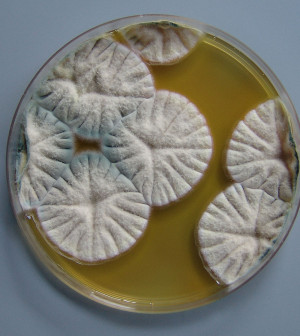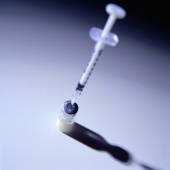- Skip Storing This Everyday Product in the Fridge Door
- Green Tea + B3 Pairing May Boost Brain Health
- Navigating Your Midlife Crisis: Embracing New Possibilities
- City Raccoons Showing Signs of Domestication
- Mapping the Exposome: Science Broadens Focus to Environmental Disease Triggers
- One Week Less on Social Media Linked to Better Mental Health
- Your Brain Changes in Stages as You Age, Study Finds
- Some Suicide Victims Show No Typical Warning Signs, Study Finds
- ByHeart Formula Faces Lawsuits After Babies Sickened With Botulism
- Switch to Vegan Diet Could Cut Your Greenhouse Gas Emissions in Half
HPV Vaccine Program in Australia Linked to Lower Infection Rates


Improved access to the human papillomavirus (HPV) vaccine has resulted in a significant reduction in rates of genital warts among young women in Australia, a new study has found.
HPV is a common, sexually transmitted virus that affects both women and men. In some cases, HPV can lead to cancer or genital warts. Since HPV usually doesn’t cause symptoms, people may not even realize they’re infected.
The HPV vaccine can help prevent HPV-related cancers and other conditions. This vaccine is most effective when it’s given before a person becomes sexually active, researchers have found.
The HPV vaccine is being provided free in Australian schools as part of the country’s national immunization program, the study authors noted. The vaccine protects against two major viral causes of genital warts — HPV 6 and 11. It also protects against two major viral causes of cervical cancer — HPV 16 and 18.
Started in 2007, the Australian HPV vaccine program has led to a 61 percent drop in genital warts cases among young women aged 15 to 27, according to the study published online recently in PLOS One.
“The program has proved to be a great success and of huge benefit to the sexual health of Australia, and has clearly proven to be very worthwhile,” study author Christopher Harrison of the University of Sydney, said in a university news release.
The study included more than 1 million patient encounters (clinic or doctor visits) between 2000 and 2012. The researchers found genital warts cases fell from 4.33 per 1,000 encounters before the vaccination program was introduced to 1.67 per 1,000 encounters after it was implemented.
“This is the first study to report the impact of HPV vaccinations on genital warts management in general practice, which is where the majority of cases are treated,” noted Harrison. “This is an excellent result as not only do genital warts cause distress in affected patients, but treatment is at a substantial cost to the health system.”
There was no significant change in rates of genital warts for boys or girls of other age groups, the researchers noted. “There was also no significant decrease in other sexually transmitted infections over this period, which means that the decrease in genital warts was likely due to the vaccination program, not a change in the women’s behavior,” Harrison added.
In the United States, most insurance plans and Medicaid cover HPV vaccines. The two vaccines available in the United States are Gardasil and Cervarix.
The U.S. Centers for Disease Control and Prevention recommends that all boys and girls aged 11 and 12 get the three-dose vaccine so they are protected against HPV before they become sexually active, and that unvaccinated teenagers and young women up to age 26 get “catch-up” vaccination.
More information
The U.S. Centers for Disease Control and Prevention has more about the HPV vaccine.
Source: HealthDay
Copyright © 2025 HealthDay. All rights reserved.










